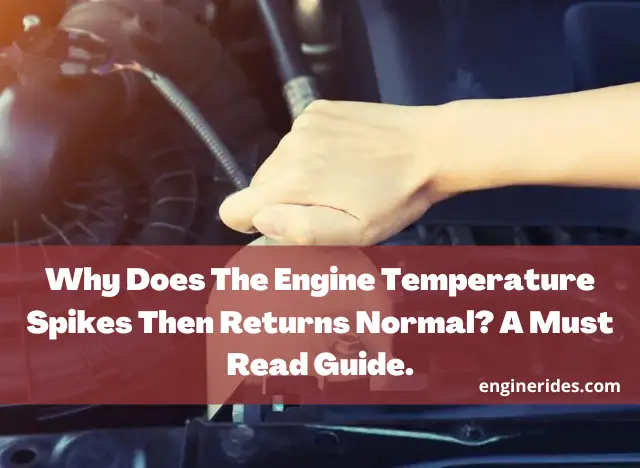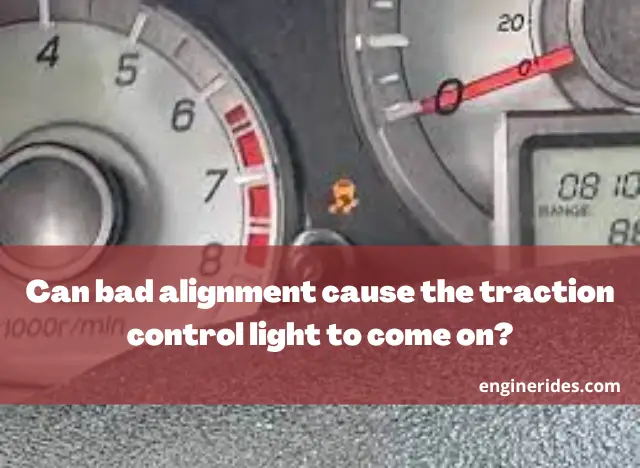Why Does The Engine Temperature Spikes Then Returns Normal? A Must Read Guide
At first, you have to know that sudden temperature changes in your vehicle are not good, and it is not normal. So, such cases should be quickly inspected and repaired ASAP.
In this context, we’ll discuss why your engine temperature spikes and then returns to normal, discussing the reasons, fixing, and the steps you could take to prevent it. So sit back and relax because we’ve got you covered with the quickest and most possible fixes for this, and therefore, stick around until the end with us.
Table of Contents
What should be the normal temperature of the Engine?

The normal operating temperature of a vehicle engine typically ranges from 195 to 220 degrees Fahrenheit (90 to 105 degrees Celsius). Different vehicles and engines may have slightly different temperature ranges, so it’s essential to consult your vehicle’s owner’s manual for the specific temperature range recommended by the manufacturer.
In general, the engine’s cooling system, including the thermostat and radiator, is designed to maintain the engine temperature within this range. If your engine runs too cold (below 195°F or 90°C), it may not operate efficiently, and if it runs too hot (above 220°F or 105°C), it can risk overheating, causing damage to the engine components.
Why Does The Engine Temperature Spikes Then Return Normal?

Engine temperature spikes followed by a return to normal can be caused by various factors, and it’s important to address these issues to prevent potential engine damage. Here are five common reasons for such temperature fluctuations:
01. Thermostat Issues
The thermostat regulates the flow of coolant through the engine. If it’s stuck closed, coolant won’t circulate properly, causing the engine to overheat. Once the thermostat opens or partially opens, the coolant flow is restored, and the temperature returns to normal.
02. Coolant Leaks
Coolant leaks can result in insufficient cooling, leading to temperature spikes. When the coolant level drops below a critical point, there may not be enough coolant to effectively cool the engine. Once the leak is addressed or the coolant is refilled, the temperature should stabilize.
03. Cooling Fan Problems
The cooling fan is responsible for dissipating heat from the radiator. If it malfunctions or doesn’t turn on when needed, the engine can overheat. When the fan eventually kicks in, it helps reduce the temperature.
04. Blocked Radiator
A blocked or clogged radiator can hinder the flow of air and coolant, causing temperature spikes. As the blockage is cleared or when the vehicle cools down, the engine temperature may return to normal. This issue can be due to debris, dirt, or corrosion in the radiator.
05. Air in the Cooling System
Air pockets in the cooling system can disrupt the circulation of coolant and lead to localized hotspots in the engine. Bleeding the air out of the system, usually done during routine maintenance, can resolve this issue, allowing for better cooling.
It’s important to note that while these are common reasons for temperature spikes, other factors, such as a malfunctioning water pump, a failing head gasket, or a faulty temperature sensor, can also contribute to this problem.
What should you do when the Engine Temperature Spikes Then Return Normal?
If your vehicle’s engine temperature spikes and then returns to normal, it’s a clear sign that there may be an issue with the cooling system. Ignoring this problem can lead to more severe engine damage, so it’s important to take appropriate action. Here’s what you should do when you experience such temperature fluctuations:
Step 1: Pull Over Safely
- When you notice the temperature gauge rising above the normal range, find a safe location to pull over. Do not continue driving with an overheating engine as it can cause serious damage.
Step 2: Turn Off the Engine
- Shut off the engine to prevent further overheating. Let the engine cool down for at least 15-20 minutes. Opening the hood can help dissipate heat more quickly.
Step 3: Check Coolant Level
- Carefully check the coolant level in the coolant reservoir (when the engine is cool). If it’s significantly low, top it up with the appropriate coolant mix, following your vehicle’s specifications.
Step 4: Inspect for Leaks
- Examine the ground under your vehicle for signs of coolant leaks. If you notice puddles or drips, this may indicate a leak in the cooling system.
Step 5: Check Radiator and Hoses
- Carefully touch the radiator and radiator hoses. If they are extremely hot or under pressure, exercise caution. These components may need time to cool down. If you find visible damage or leaks in the hoses, they may need to be replaced.
Step 6: Verify the Cooling Fan
- Ensure that the cooling fan is functioning correctly. The fan should engage when the engine reaches a certain temperature. If it’s not running, there may be an issue with the fan motor, sensor, or wiring.
Step 7: Inspect the Thermostat
- A malfunctioning thermostat can cause temperature spikes. It may be stuck closed, preventing the flow of coolant. If it’s stuck open, the engine may run cooler than usual. Have a mechanic inspect and possibly replace the thermostat if necessary.
Step 8: Avoid Opening the Radiator Cap
- Do not attempt to open the radiator cap when the engine is hot. The cooling system is pressurized, and releasing the cap can result in a dangerous release of hot coolant and steam. Wait until the engine has cooled down.
Step 9: Seek Professional Help
- If the problem persists or if you’re unsure about the cause, it’s essential to have your vehicle inspected by a qualified mechanic. They can diagnose and address the underlying issue, which could involve components like the water pump, radiator, or even a more serious problem like a head gasket failure.
Remember that maintaining the cooling system and addressing temperature spikes promptly is crucial for the health and longevity of your vehicle’s engine. Ignoring overheating issues can lead to costly repairs or even engine damage.
How to prevent engine temperature spikes?

Preventing engine temperature spikes is essential for the health and longevity of your vehicle’s engine. Here are some steps you can take to minimize the risk of overheating:
01. Regular Cooling System Maintenance
One of the most effective ways to prevent temperature spikes is to adhere to your vehicle’s recommended maintenance schedule. This includes routine checks and servicing of the cooling system. Ensure that the radiator, hoses, and other cooling components are in good condition. Regular maintenance can catch problems early and prevent them from escalating into overheating issues.
02. Monitor Coolant Levels and Quality
Check the coolant level in the coolant reservoir regularly, especially before long trips. Ensure it’s within the recommended range and top it up with the correct coolant mixture if necessary. Also, pay attention to the quality of the coolant; it should be clean and free from contaminants. Replace the coolant as recommended by your vehicle’s manufacturer.
Is Aftermarket Catalytic Converter Loud? Everything You Need To Know
enginerides.com
03. Proper Venting of the Cooling System
Ensure that your cooling system is properly vented to eliminate air pockets. Air bubbles can disrupt the flow of coolant and lead to localized hotspots in the engine. Bleed the cooling system as part of routine maintenance to prevent this issue.
04. Radiator and Fan Maintenance
Regularly inspect the radiator for debris and dirt accumulationClean the radiator fins with a soft brush or compressed air to maintain its cooling efficiency. Also, check the operation of the cooling fan. It should engage when the engine temperature rises. If it’s not functioning correctly, have it repaired or replaced by a qualified mechanic.
05. Watch for Warning Signs:
Stay vigilant for warning signs of impending overheating, such as rising temperature on the gauge, unusual smells, steam, or a loss of power. If you notice any of these signs, pull over safely and investigate the issue, as outlined in previous responses. Addressing problems promptly can prevent temperature spikes and further engine damage.
By following these steps and staying proactive with your vehicle’s cooling system, you can significantly reduce the risk of engine temperature spikes and maintain your vehicle’s reliability and performance.








3 Comments